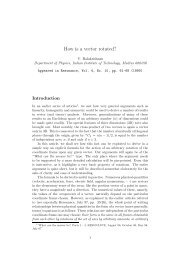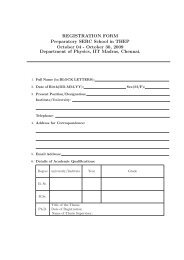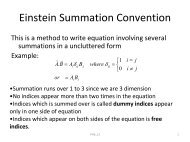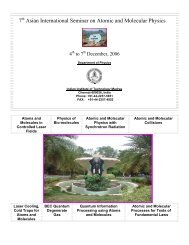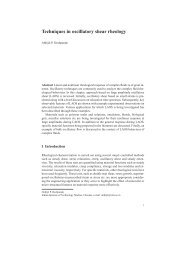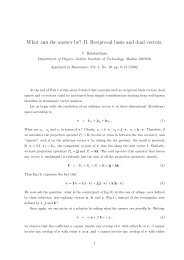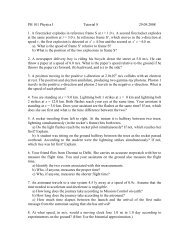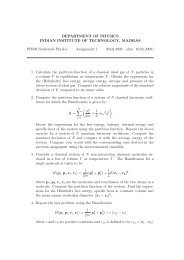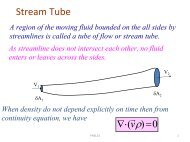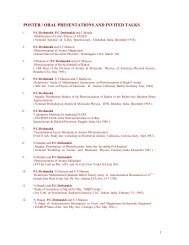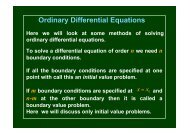Symmetry Principles and Conservation Laws in Atomic and ...
Symmetry Principles and Conservation Laws in Atomic and ...
Symmetry Principles and Conservation Laws in Atomic and ...
Create successful ePaper yourself
Turn your PDF publications into a flip-book with our unique Google optimized e-Paper software.
GENERAL ARTICLEask if the conservation pr<strong>in</strong>ciples are consequences of thelaws of Nature, or, rather the laws of Nature are consequencesof the symmetry pr<strong>in</strong>ciples that govern them?Until E<strong>in</strong>ste<strong>in</strong>'s special theory of relativity, it was believedthat conservation pr<strong>in</strong>ciples are the result of thelaws of Nature. S<strong>in</strong>ce E<strong>in</strong>ste<strong>in</strong>'s work, however, physicistsbegan to analyze the conservation pr<strong>in</strong>ciples asconsequences of certa<strong>in</strong> underly<strong>in</strong>g symmetry considerationsfrom which they could be deduced, enabl<strong>in</strong>gthe laws of Nature to be revealed from this analysis.Wigner's profound impact on physics is that his explanationsof symmetry considerations us<strong>in</strong>g `group theory'resulted <strong>in</strong> a change <strong>in</strong> the very perception of just whatis most fundamental, <strong>and</strong> physicists began to regard`symmetry' as the most fundamental entity whose formwould govern the physical laws. Wigner was awardedthe 1963 Nobel Prize <strong>in</strong> Physics for these <strong>in</strong>sights [3].The conservation of l<strong>in</strong>ear <strong>and</strong> angular momentum weillustrated above are consequences of <strong>in</strong>variance undercont<strong>in</strong>uous displacements <strong>and</strong> rotations respectively <strong>in</strong>homogenous <strong>and</strong> isotropic space. Likewise, the conservationof energy is a consequence of <strong>in</strong>variance undercont<strong>in</strong>uous temporal displacement.A detailed exposition of the govern<strong>in</strong>g symmetry pr<strong>in</strong>ciplesrequires group theoretical methods, <strong>and</strong> is clearlybeyond the scope of this article, but we cont<strong>in</strong>ue to dwellon some other k<strong>in</strong>ds of symmetries now <strong>and</strong> exam<strong>in</strong>etheir connections with conservation pr<strong>in</strong>ciples.Figure 1. Masters of symmetry.5. Dynamical <strong>Symmetry</strong>: Laplace{Runge{LenzVectorIt is well known that <strong>in</strong> the classical two-body Keplerproblem (gravitational Sun{Earth system, or the Coulombicproton{electron planetary model of the old-quantumtheoryof the hydrogen atom), both energy <strong>and</strong> angularmomentum are conserved. We have already discussedRefer to Resonance issues on:E<strong>in</strong>ste<strong>in</strong>, Vol.5, March <strong>and</strong> April2000.Noether, Vol.3,September 1998.Wigner, Vol.14, October 2009.RESONANCE September 2010839



